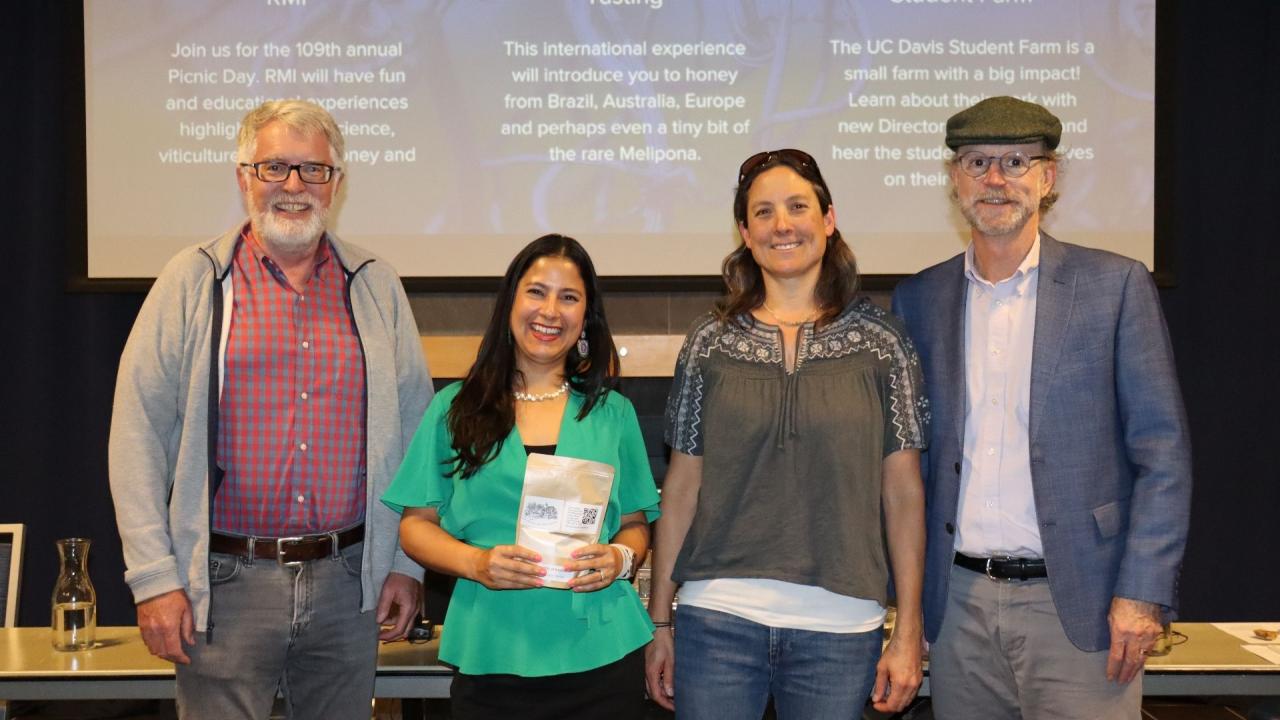
All About Grains
Grains feed the world, but not all grains are (or taste!) equal. Just like the taste of wine depends on the type of grape, grain varieties affect quality, color, flavor, and more.
The Robert Mondavi Institute for Wine and Food Science recently hosted Sips and Bites: All About Grains. The event, which highlighted the UC Davis student-led SCOPE (Student Collaborative Plant Breeding Education) Small Grain Project, included a cracker and cookie tasting and a panel discussion. The panel featured three experts in the grains industry, including Claudia Carter, Executive Director of the California Wheat Commission, Allison Krill-Brown, Research Advisor for the Small Grains program at SCOPE, and Charlie Brummer, a UC Davis Professor and Director of the Plant Breeding Center.
Guests received a lineup of crackers and cookies; as Carter mentioned, this was “science you can eat!” Each grain variety was made into both a cracker and a cookie for guests to experience it in both a savory and a sweet manner. The tried-and-true recipes, borrowed from the California Wheat Commission, featured high-quality ingredients and enabled the grain varieties to stand out during the tasting. The single-variety grains included the following:
- UC Amarillo wheat (grown organically by Durst Farms in the Sacramento Valley)
- Ukrainian 04 triticale (an unreleased Ukrainian variety developed in collaboration with Dr. Josh Hegarty at UC Davis)
- OSU Streaker naked barley (developed by Oregon State University, a collaborator of the UC barley program).
This event was my first experience with single-variety grain products, and as the speakers mentioned, most grains sold in the grocery store include a blend of 5-10 varieties. As we began tasting, the panel educated guests on how to approach it. They asked us to note details often mentioned in wine tastings, including color, mouthfeel, and flavor. The audience worked through the cookies and crackers, noting favorites when eaten alone and when paired with the assortment of nuts, cheese, and fruit provided. Interestingly, my favorite grain variety differed for the cracker versus the cookie.
The panel explained the differences in the varieties and how they contribute to different sensory experiences. For example, different gluten contents contribute to different textures of the final cookie or cracker product, and different anthocyanin levels lead to different grain colorations.
After the tasting, the audience could take a bag home of whole grain flour from their favorite variety, so the grain tastings don’t have to end there! If you missed the event but want to try hosting a grain tasting at home, farmers markets and local mills have high-quality selections to offer. Whole grain is not only a healthy choice, but it can be a lot of fun too!
